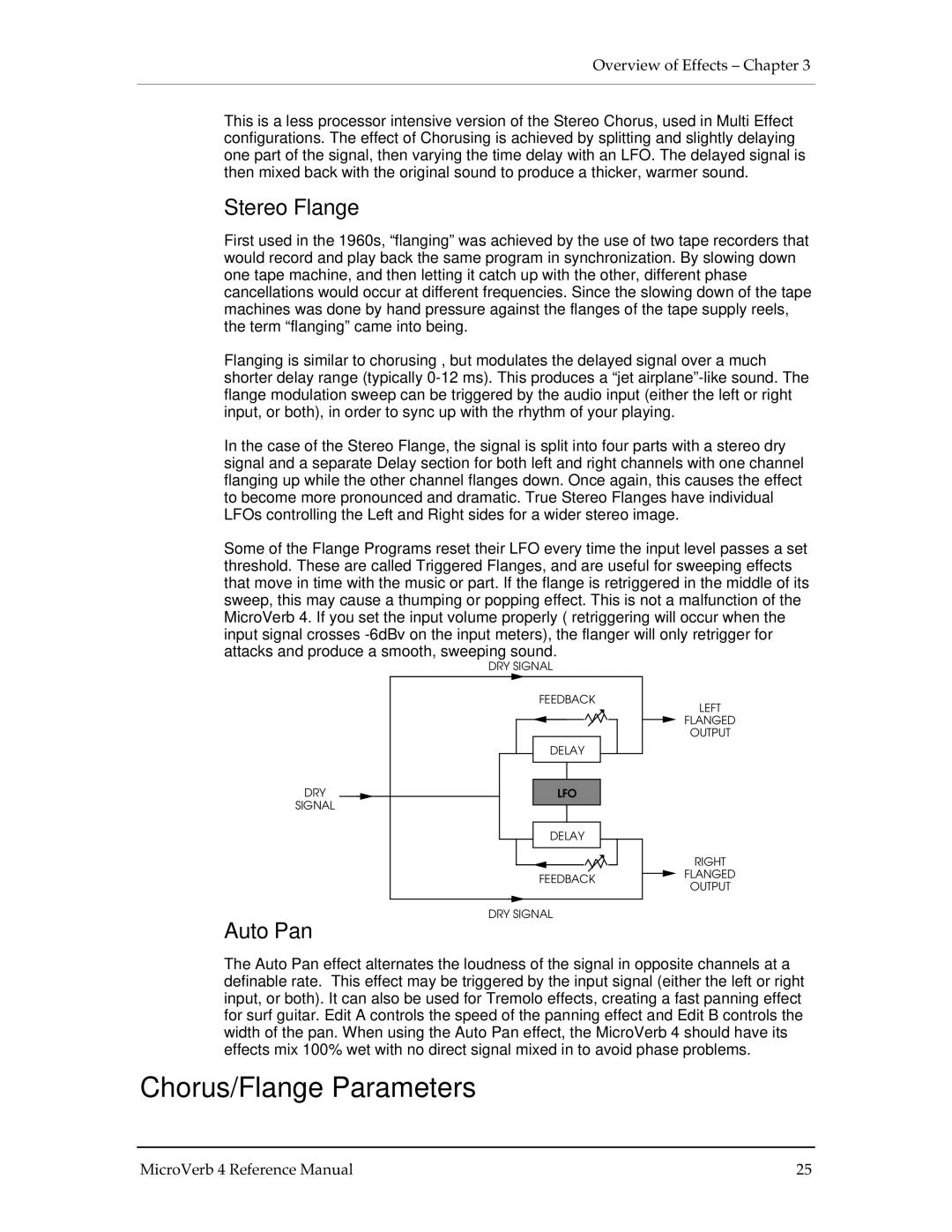
Overview of Effects – Chapter 3
This is a less processor intensive version of the Stereo Chorus, used in Multi Effect configurations. The effect of Chorusing is achieved by splitting and slightly delaying one part of the signal, then varying the time delay with an LFO. The delayed signal is then mixed back with the original sound to produce a thicker, warmer sound.
Stereo Flange
First used in the 1960s, “flanging” was achieved by the use of two tape recorders that would record and play back the same program in synchronization. By slowing down one tape machine, and then letting it catch up with the other, different phase cancellations would occur at different frequencies. Since the slowing down of the tape machines was done by hand pressure against the flanges of the tape supply reels, the term “flanging” came into being.
Flanging is similar to chorusing , but modulates the delayed signal over a much shorter delay range (typically
In the case of the Stereo Flange, the signal is split into four parts with a stereo dry signal and a separate Delay section for both left and right channels with one channel flanging up while the other channel flanges down. Once again, this causes the effect to become more pronounced and dramatic. True Stereo Flanges have individual LFOs controlling the Left and Right sides for a wider stereo image.
Some of the Flange Programs reset their LFO every time the input level passes a set threshold. These are called Triggered Flanges, and are useful for sweeping effects that move in time with the music or part. If the flange is retriggered in the middle of its sweep, this may cause a thumping or popping effect. This is not a malfunction of the MicroVerb 4. If you set the input volume properly ( retriggering will occur when the input signal crosses
|
| DRY SIGNAL | |||
|
|
|
|
| FEEDBACK |
|
|
|
|
|
|
|
|
|
|
| DELAY |
|
|
|
|
|
|
|
|
|
|
|
|
DRY |
|
|
|
| LFO |
SIGNAL |
|
|
|
|
|
|
|
|
|
| |
|
|
|
|
|
|
|
|
|
|
| DELAY |
|
|
|
|
|
|
|
|
|
|
| FEEDBACK |
|
|
|
|
| |
|
| DRY SIGNAL | |||
Auto Pan
LEFT
FLANGED
OUTPUT
RIGHT
FLANGED
OUTPUT
The Auto Pan effect alternates the loudness of the signal in opposite channels at a definable rate. This effect may be triggered by the input signal (either the left or right input, or both). It can also be used for Tremolo effects, creating a fast panning effect for surf guitar. Edit A controls the speed of the panning effect and Edit B controls the width of the pan. When using the Auto Pan effect, the MicroVerb 4 should have its effects mix 100% wet with no direct signal mixed in to avoid phase problems.
Chorus/Flange Parameters
MicroVerb 4 Reference Manual | 25 |
